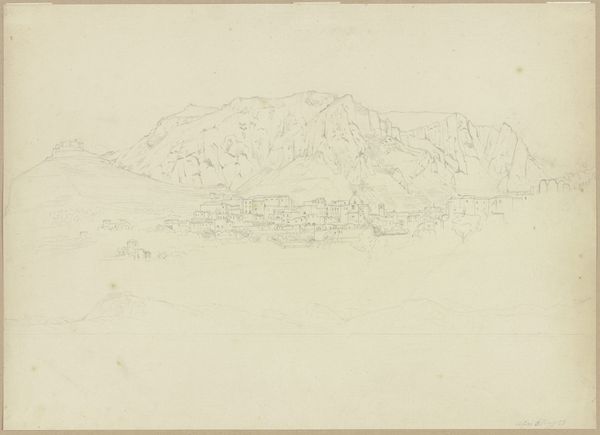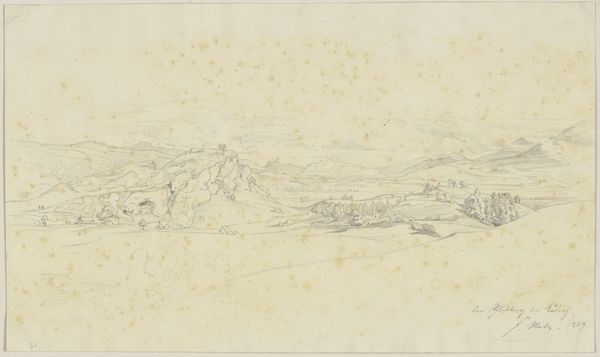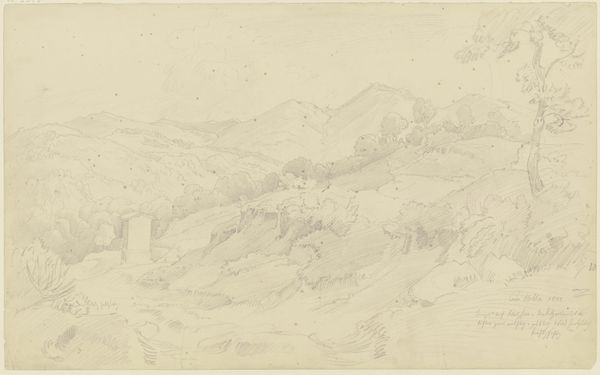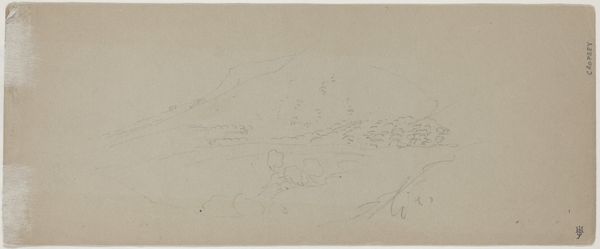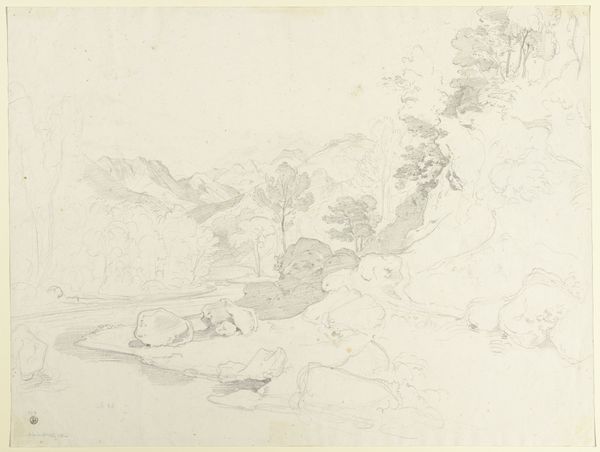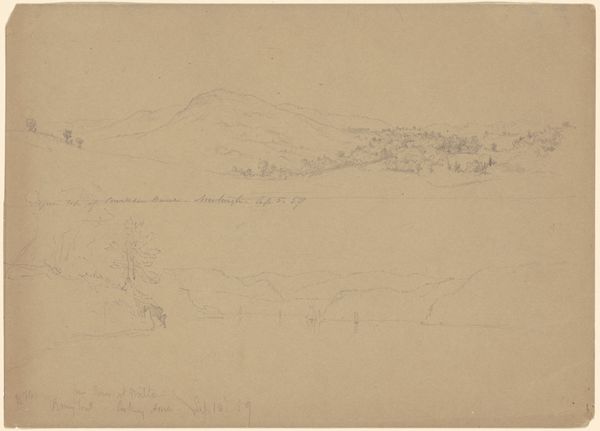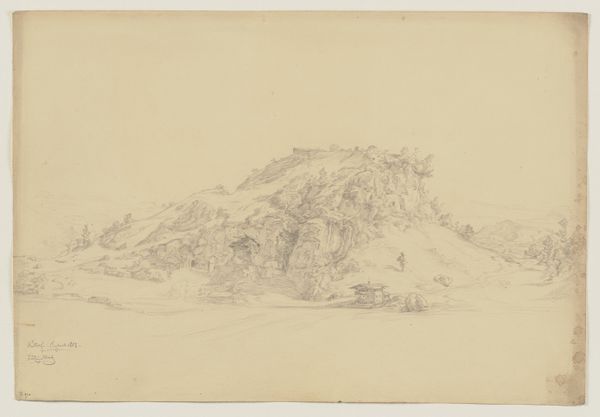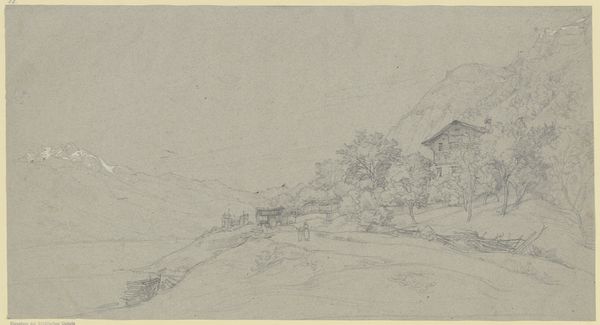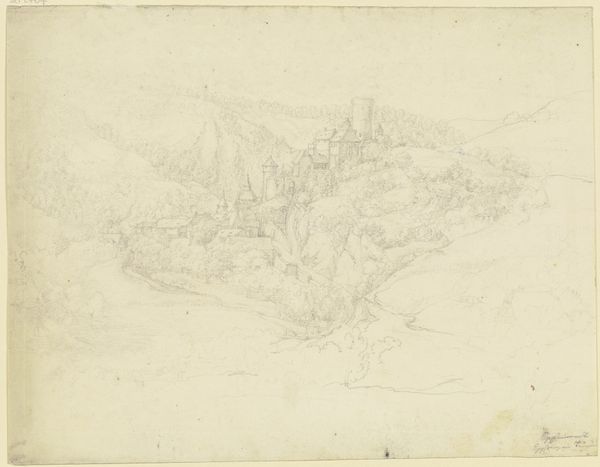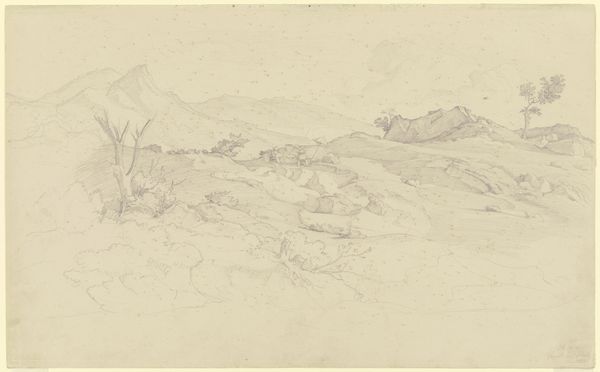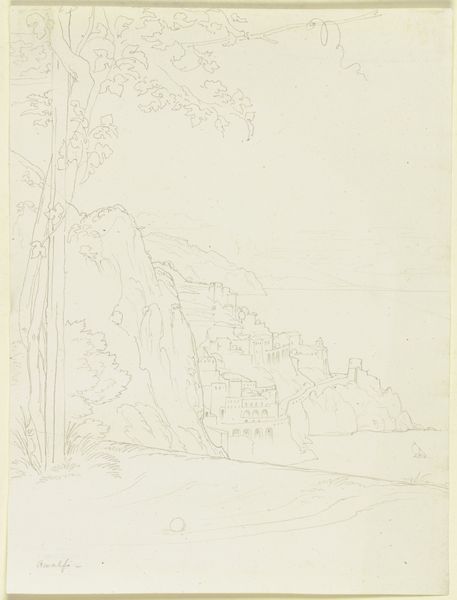
Valcimarra mit der Ruine des Santuario della Madonna del Sasso (_) 29 - 1830
0:00
0:00
Copyright: Public Domain
Curator: This is Friedrich Maximilian Hessemer's "Valcimarra mit der Ruine des Santuario della Madonna del Sasso," created around 1829-1830. It’s a landscape drawing, rendered in pencil and graphite, currently held here at the Städel Museum. Editor: Immediately, I notice the ethereal quality. The pale graphite on paper makes the scene feel both intimate and vast. The crumbling sanctuary speaks to a loss of power, perhaps. Curator: Absolutely, Hessemer was deeply interested in architectural ruins. They weren’t just picturesque backdrops. Consider how ruins functioned during the Romantic era. They were potent symbols of history, time's passage, and even societal shifts, often tied to evolving political landscapes. Hessemer meticulously documented structures, viewing them as material records of the past. Editor: And within that context, ruins weren’t just historical footnotes but active participants in constructing identity. By capturing Valcimarra, Hessemer’s work reflects larger debates about nationalism, belonging, and the legacies of empires that often overlook the stories and plights of marginalized communities and rural settlements. How do we read the landscape here beyond aesthetic beauty? Curator: A fascinating question. Remember that art institutions play a crucial role in shaping collective memory. The artwork might offer insight to regional identities within wider German nationalism or, conversely, stand as critique through visual record. Hessemer presents the sanctuary as an aesthetic object and an emblem of a complex relationship between the past, the present, and regional communities that have adapted to its transformations. Editor: It makes you wonder about those who lived in proximity to this site. Were they romanticizing the same picturesque qualities that Hessemer depicted, or was their interaction with the sanctuary's decline informed by the immediacy of survival? It seems like these questions are important as they challenge our assumptions about romanticizing decay and ruin. Curator: It forces us to consider the politics inherent in any act of documentation. Ultimately, Hessemer's drawing, seen through a critical lens, compels us to consider the interwoven relationships between artistic interpretation, social realities, and political power structures. Editor: This pushes us beyond aesthetics and into a realm where art becomes a tool for critical inquiry and empathy. Curator: Exactly, it’s a document that engages in a social and cultural history. Editor: And one that reveals as much about us, the viewers, as it does about Valcimarra.
Comments
No comments
Be the first to comment and join the conversation on the ultimate creative platform.
